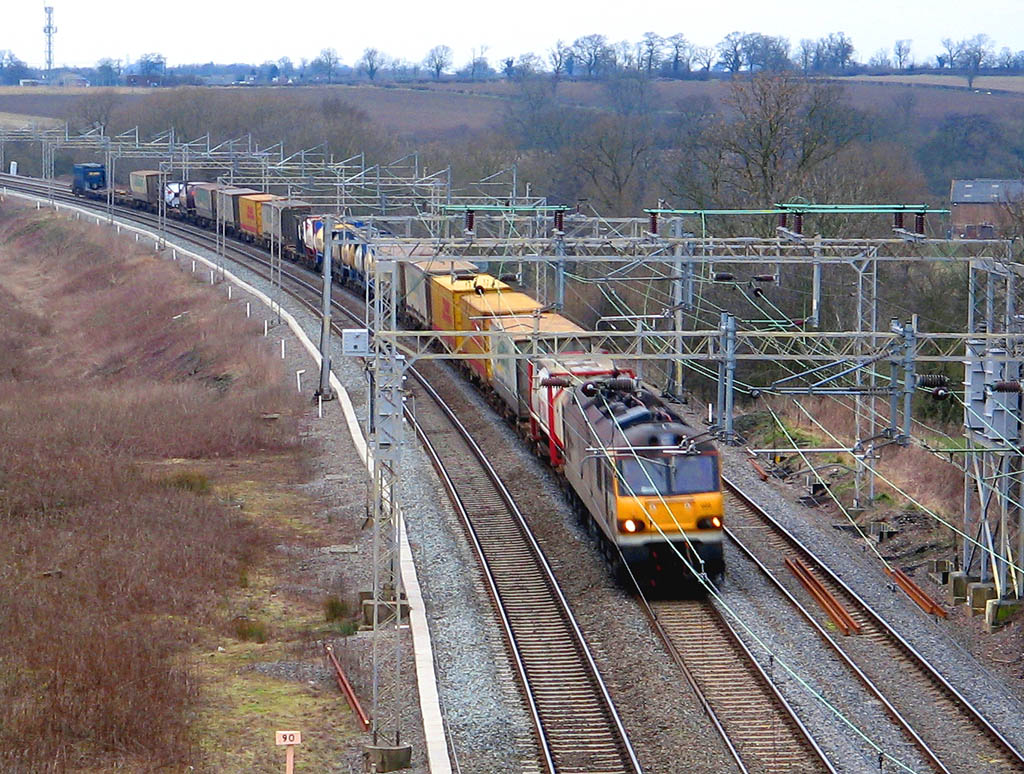- By TOP CHINA FREIGHT
- September 18, 2025
- Rail Freight, Shipping
Table of Contents
Freight trains in China connect industrial hubs, manufacturing centers, and ports, offering a faster, cost-effective alternative to sea transport and a more economical choice than air freight. Businesses rely on this network to transport electronics, machinery, textiles, and other high-value goods efficiently.

What are freight trains in China?
Freight trains in China are part of a vast rail network connecting thousands of kilometers across the country and extending to international markets through the China-Europe Railway Express.
Coverage:
Connects cities such as Chongqing, Wuhan, Xi’an, and Zhengzhou to global destinations.
Transit Time:
Domestic shipments typically take 3–7 days; international routes can take 15–20 days.
Cargo Types:
Electronics, automotive parts, textiles, machinery, and bulk goods.
Advantages:
Predictable schedules, eco-friendly, safer than road transport for high-value cargo.
This system provides businesses with reliability, speed, and flexibility in supply chain management.
How do freight trains in China compare to other shipping methods?
Rail freight balances cost, speed, and reliability. Here is a comparative table:
| Shipping Method | Average Cost | Transit Time | Best For | Pros | Cons |
|---|---|---|---|---|---|
| Air Freight | High | 2–5 days | Urgent, high-value cargo | Fastest, reliable schedules | Expensive, limited capacity |
| Sea Freight | Low | 30–45 days | Bulk, heavy goods | Cheapest, large capacity | Slow, subject to port congestion |
| Rail Freight | Medium | 3–20 days | General cargo, electronics, machinery | Eco-friendly, faster than sea, cost-effective | Limited routes, capacity restrictions |
Freight trains in China provide an ideal middle ground for businesses needing predictable delivery without the high cost of air freight.
What are the main domestic freight train routes?
China’s domestic freight network links major manufacturing and industrial zones. Key routes include:
| Origin | Destination | Transit Time | Cargo Focus |
|---|---|---|---|
| Chongqing | Wuhan | 3 days | Automotive, machinery |
| Xi’an | Guangzhou | 4 days | Electronics, textiles |
| Zhengzhou | Shenzhen | 5 days | Consumer goods, machinery |
| Wuhan | Shanghai | 3 days | High-tech equipment |
Efficient domestic rail routes support just-in-time manufacturing and improve inventory turnover.
How do international freight trains operate from China?
Chongqing, Xi’an, Zhengzhou, Wuhan
Duisburg, Hamburg, Warsaw, Madrid, London
Typically 15–20 days, depending on customs clearance and route
Electronics, machinery, textiles, automotive components
What is the cost of freight trains in China?

Costs depend on distance, container size, cargo type, and service level.
Approximate rates:
| Container Type | Estimated Cost | Capacity |
|---|---|---|
| 20ft FCL | $3,500–$5,500 | 28–30 CBM |
| 40ft FCL | $7,500–$10,000 | 58–60 CBM |
| LCL | $120–$220 per CBM | Shared container |
Though more expensive than sea freight for bulk cargo, rail reduces storage and inventory costs due to faster delivery times.
What cargo is ideal for rail shipping in China?
Rail freight suits goods that need balance between cost and speed:
- Electronics and high-tech equipment
- Automotive components and machinery
- Textiles and clothing
- Consumer products
- Temperature-sensitive items with refrigerated containers
Businesses must plan for size restrictions and hazardous material regulations when shipping via rail.
What customs documents are needed for rail shipments?

Efficient customs processing is crucial for on-time delivery. Documents typically required:
| Document | Purpose |
|---|---|
| Commercial Invoice | Declares cargo value |
| Packing List | Details contents |
| Rail Waybill | Contract of carriage |
| Certificate of Origin | Verifies product origin |
| Import Licenses | For regulated items |
| Customs Declaration | Ensures legal border clearance |
How reliable are freight trains in China?
Freight trains in China maintain consistent schedules and are less affected by port congestion than sea freight.
Advantages include:
- Stable timetables allowing predictable delivery
- Advanced tracking systems for real-time monitoring
- Eco-friendly operations with lower emissions than air freight
- Reduced cargo damage risk compared to road transport
Businesses benefit from a dependable supply chain solution with fewer disruptions.
Pros and cons of freight trains in China
| Pros | Cons |
|---|---|
| Faster than sea freight (3–20 days) | Limited capacity compared to sea |
| Cheaper than air freight | Fewer international routes than air/sea |
| Eco-friendly and sustainable | Not suitable for extremely large or perishable cargo |
| Reliable schedule and tracking | Border inspections may add minor delays |
Understanding these factors helps businesses choose the optimal transportation method.
Case Study: Electronics Exporter

A Shenzhen-based electronics exporter previously relied solely on sea freight to reach European clients. Delivery took 35–40 days. After switching part of shipments to freight trains in China, transit reduced to 17 days, improving inventory turnover and reducing storage costs. The business could meet urgent customer demands while controlling shipping expenses.
Conclusion
Freight trains in China offer businesses a reliable, cost-effective, and eco-friendly alternative to traditional sea and air freight. With domestic transit as fast as 3–7 days and international shipping to Europe or Asia in 15–20 days, rail freight supports efficient supply chains. Companies shipping electronics, machinery, textiles, or high-value goods benefit from predictable schedules, reduced storage costs, and lower carbon emissions. Integrating rail into logistics planning enhances delivery speed, reduces costs, and strengthens global competitiveness.
Need a Shipping Quote?
If you want expert guidance and peace of mind, our team is ready to assist.
TJ China Freight offers tailored solutions to help businesses of all sizes ship more reliably from China.

FAQ
Q1:. How frequent are freight trains in China?
Domestic and international freight trains operate multiple times per week. Frequency depends on route, seasonal demand, and container availability.
Q2:Can small shipments use rail freight?
Yes, LCL options allow small businesses to share container space, making rail freight cost-effective for SMEs.
Q3:Are refrigerated containers available?
Yes. Perishable goods such as pharmaceuticals and food products can be shipped in temperature-controlled containers with prior booking.
Q4:Do border inspections cause delays?
Minor delays may occur, but accurate documentation and experienced forwarders minimize risks.
Q5:Which cargo types are not suitable for rail?
Oversized, extremely heavy, or certain hazardous materials may require alternative transport or special permits.
